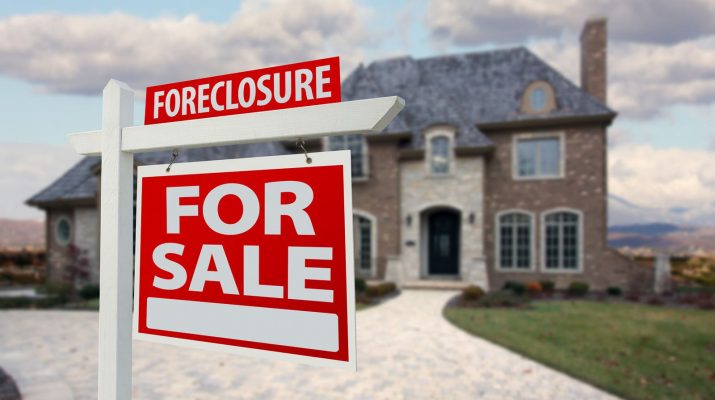Investors in foreclosure real estate should understand the risks before committing their time and financial resources to this asset type. Properties are classified as foreclosures when the owner-on-record is in default on mortgage payments, and the lender has initiated or completed proceedings to foreclose.
- Short sale – Under a pre-negotiated agreement between the lender and the current owner, the property may be priced below prevailing market rates and less than the outstanding mortgage balance.
- Foreclosure – A property becomes a foreclosure when the mortgagor fails to keep up their mortgage payments.
- Bank-owned – These properties have cycled through the foreclosure process and have been made available to buyers through a public auction but have not been sold.
The profit potential in short sales would be due to possible undervaluation since the lender has already agreed to accept the best offer to mitigate the risks and costs of holding foreclosures or pre-foreclosures on their books. REO properties may also be undervalued. Many of these properties may be covered by a first and second mortgage. During the foreclosure process, the subordinate mortgage lender may agree to write off their loan since filing a second foreclosure case on the same property is not a practical strategy. The lender for the first mortgage is paid first and any overage will be applied to other creditors based on a priority listing determined by the courts. Additionally, financing companies that are not equipped to handle property management responsibilities are under pressure to unload the property quickly, which could mean a lower-than-market selling price.
REALITIES OF FINANCING DISTRESSED PROPERTIES
The most complicated part about buying foreclosed properties would be securing financing for the purchase as they are often considered “cash only” properties. Traditional lenders have stringent requirements for loan approval, one of which would be an inspection report prepared by a bank-approved or recommended inspector. Typically, foreclosed properties are offered as as-is properties with no right to inspect prior to the purchase.
On Auction.com, one of the leading resources for foreclosure listings, many of the properties do not meet the requirements and conditions set by traditional lenders. For instance, the Federal Housing Authority or FHA loans have specific standards for livability and state of repair. Foreclosures are sold as-is, which means the seller will not undertake any repairs to meet FHA standards.
Fix and flip investors face a different set of home finance challenges as traditional lenders do not typically deal with short-term loans. If your investment strategy calls for buying foreclosures to renovate quickly and efficiently, look for other types of loans and lending sources.
FUNDING OPTIONS
Investing in real estate requires capital, but various funds sources are in place for those who have the financial savvy, creditworthiness and knowledge about how these resources work.
ALL-CASH DEAL
These deals are fairly straightforward. When you make an offer to buy a property, a loan approval contingency is added to the agreement. This means that failure to obtain a housing loan on your part immediately invalidates the offer to buy. An all-cash deal eschews this contingency because buyers have already secured their funding. The full amount is delivered to the closing processors via wire transfer or a cashier’s check. The funds may come from personal sources or from pre-arranged specialty loans.
ALL-CASH OFFER
Sellers prefer all-cash offers especially when it comes to foreclosure properties. Buyers do not necessarily have to fund the entire purchase from their own investment capital. The deal may be financed through a retirement fund, line of credit or loan collateral with another property.
HARD MONEY
Hard money loans are processed quickly, but they do come with high rates and fees due to the level of financial risks involved. Some characteristics include:
- Low loan-to-value ratio, indicating that the buyer is likely to be required to put down a higher down payment.
- The loan amount is tied to the value of the real estate property being purchased.
- Easier approval process because the credit strength of the borrower is not a primary criteria in loan approval.
- Documentation and loan processing is quicker and easier.
FIX AND FLIP LOANS
Property flippers buy, renovate and market properties within the space of a few months. This means flippers are usually locked out of traditional real estate loans that favor borrowers who intend to own the property long term. Fix and flip loans are intended to cover the costs of buying the home, holding it while renovating before reselling the home. Possible sources of these loans would include:
- Friends and family
- Finance partner for the project
- Home equity line of credit – This option is for investors who have at least 20 percent equity in another property, including the primary home.
- Funds from a 401k or IRA – This is a viable option for property flippers who are not close to retirement because it involves using savings earmarked for non-earning years.
- Unsecured personal loans
- Construction loans
HOW TO SECURE LOANS FROM NONTRADITIONAL SOURCES
Buying a foreclosure property as an investment should be handled as you would handle any business project.
- Prepare a comprehensive business plan that includes details of expected costs for purchase, renovation and marketing.
- Prepare a budget and a timetable for each flip project.
- Build up a network of contacts in the industry including construction and development experts and finance professionals.
- Establish and grow your reputation as a flipper.


